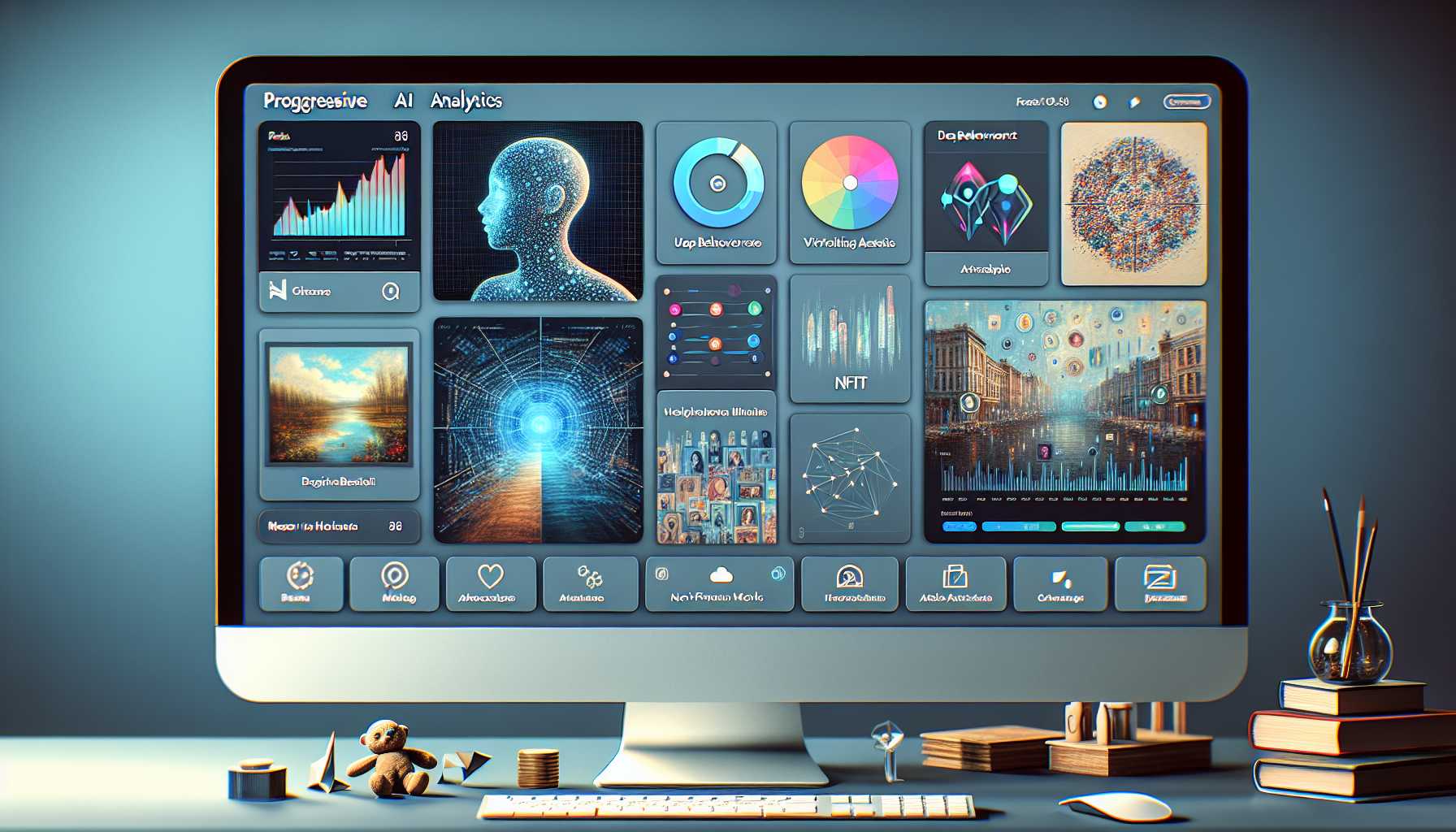”
The Digital Frontier: Zero-Day Siege on Corporate VPNs
 As the tech world constantly evolves, so do the threats lurking within its vast digital landscape. The latest alarm bells chime for the U.S. software giant Ivanti, thrust into a precarious position after the revelation that hackers are exploiting two critical-rated vulnerabilities in their corporate VPN appliance. As someone who breathes the air of tech innovation and security disruptions daily, I must say that witnessing real-time cyberattacks such as these is chilling, yet unsurprisingly a reality of our connected age. Here’s the techno-drama unfolding – Ivanti’s Connect Secure software, the sentinel standing between remote users and the corporate fortresses, has been compromised. Cyber miscreants have masterfully executed a tag-team of flaws, officially stamped as CVE-2023-46805 and CVE-2024-21887, to launch unauthenticated remote code execution. Simply put, hackers are remotely pulling the software’s strings – stealing sensitive data, and modifying files as though they’ve got a VIP pass to the system’s deepest sanctuaries. Less than 10 customers have reportedly been hit by what the digital defense community refers to as ‘zero-day vulnerabilities’. These are the deadliest kind of software flaws, essentially surprise attacks where the software maker has had ‘zero days’ to patch things up before the exploit. The adversaries, linked by Volexity to a China-backed hacking group tagged UTA0178, have been actively engaged since early December—far from a happy holiday season for the security teams. And as the digital sleuthing continues, it becomes evident that these vulnerabilities aren’t just chinks in the armor; they’re gaping breaches in the digital walls.
As the tech world constantly evolves, so do the threats lurking within its vast digital landscape. The latest alarm bells chime for the U.S. software giant Ivanti, thrust into a precarious position after the revelation that hackers are exploiting two critical-rated vulnerabilities in their corporate VPN appliance. As someone who breathes the air of tech innovation and security disruptions daily, I must say that witnessing real-time cyberattacks such as these is chilling, yet unsurprisingly a reality of our connected age. Here’s the techno-drama unfolding – Ivanti’s Connect Secure software, the sentinel standing between remote users and the corporate fortresses, has been compromised. Cyber miscreants have masterfully executed a tag-team of flaws, officially stamped as CVE-2023-46805 and CVE-2024-21887, to launch unauthenticated remote code execution. Simply put, hackers are remotely pulling the software’s strings – stealing sensitive data, and modifying files as though they’ve got a VIP pass to the system’s deepest sanctuaries. Less than 10 customers have reportedly been hit by what the digital defense community refers to as ‘zero-day vulnerabilities’. These are the deadliest kind of software flaws, essentially surprise attacks where the software maker has had ‘zero days’ to patch things up before the exploit. The adversaries, linked by Volexity to a China-backed hacking group tagged UTA0178, have been actively engaged since early December—far from a happy holiday season for the security teams. And as the digital sleuthing continues, it becomes evident that these vulnerabilities aren’t just chinks in the armor; they’re gaping breaches in the digital walls.
AI As a Shield: The Cybersecurity Game-Changer
 The cyber realm continues to be a chessboard of offense and defense, with artificial intelligence (AI) now a knight in shining armor. At a cybersecurity conference in New York, Rob Joyce of the NSA championed AI as our avant-garde in combatting digital rogues. AI is no longer just a topic of science fiction—it’s the hand aiding us in sifting through the haystack of network traffic to find the needle-like traces of malevolent actors. Generative AI, in particular, has been embraced by the dark side of the cyber world, deployed to craft personalized social engineering attacks with frightening accuracy and precision. Yet, the very same cutting-edge technology is empowering the good guys—giving cybersecurity experts enhanced detection capabilities and faster reactions. Like all tools, AI is as potent as the hands wielding it, and it’s affirming that security personnel are getting their share of digital superpowers. As a tech enthusiast and investor, I view this as a vivid reminder that keeping pace with technological advancements doesn’t just propel us forward but also defends us from those lurking in the shadows of the digital world.
The cyber realm continues to be a chessboard of offense and defense, with artificial intelligence (AI) now a knight in shining armor. At a cybersecurity conference in New York, Rob Joyce of the NSA championed AI as our avant-garde in combatting digital rogues. AI is no longer just a topic of science fiction—it’s the hand aiding us in sifting through the haystack of network traffic to find the needle-like traces of malevolent actors. Generative AI, in particular, has been embraced by the dark side of the cyber world, deployed to craft personalized social engineering attacks with frightening accuracy and precision. Yet, the very same cutting-edge technology is empowering the good guys—giving cybersecurity experts enhanced detection capabilities and faster reactions. Like all tools, AI is as potent as the hands wielding it, and it’s affirming that security personnel are getting their share of digital superpowers. As a tech enthusiast and investor, I view this as a vivid reminder that keeping pace with technological advancements doesn’t just propel us forward but also defends us from those lurking in the shadows of the digital world.
Politics in the Age of AI: Deepfakes and Democracy
 Hold on to your hats—or rather, your voting ballots—as we sprint towards the 2024 U.S. election with a frenzied concern over AI’s potential to disrupt democracy. AI’s influential hands could either taint the electoral process with deepfakes and misinformation or, alternatively, serve as a lighthouse guiding voters through the stormy seas of political discourse. We’ve seen notorious examples, such as the ersatz speech by former President Obama, that shake the foundations of our trust in media. The technology is a double-edged sword that could enhance political messaging to recruit more citizen participation or create a dystopian reality echoing with the echoes of fabricated truths. As tech pundits and concerned citizens ponder over AI-generated content, clear is the need for a collaborative effort. Tech companies, governments, and society must intertwine to weave a safety net that diffuses the threat of misinformation while simultaneously harnessing AI’s potential to fortify the democratic process.
Hold on to your hats—or rather, your voting ballots—as we sprint towards the 2024 U.S. election with a frenzied concern over AI’s potential to disrupt democracy. AI’s influential hands could either taint the electoral process with deepfakes and misinformation or, alternatively, serve as a lighthouse guiding voters through the stormy seas of political discourse. We’ve seen notorious examples, such as the ersatz speech by former President Obama, that shake the foundations of our trust in media. The technology is a double-edged sword that could enhance political messaging to recruit more citizen participation or create a dystopian reality echoing with the echoes of fabricated truths. As tech pundits and concerned citizens ponder over AI-generated content, clear is the need for a collaborative effort. Tech companies, governments, and society must intertwine to weave a safety net that diffuses the threat of misinformation while simultaneously harnessing AI’s potential to fortify the democratic process.
The Social Media Landscape: From NFTs to AI-Driven Futures
 Social media marches to the beat of rapid change, with X (formerly known as Twitter) scripting its chronicles for the year ahead. AI emerges as the protagonist in this saga, purported to refine the platform’s search capabilities and catalyze its advertising potential. However, in a twist, NFTs have found themselves pushed off stage, as X aligns itself with the movements of other internet giants like Instagram and Facebook—who have both tapered their NFT narratives. X’s visionary blueprint reveals an ambition to harmonize user experience with commerce through peer-to-peer payments. Echoing China’s WeChat, X positions itself as a one-stop-shop, amalgamating social interaction with economic transaction—a testament to the evolving role of social platforms in our daily lives.
Social media marches to the beat of rapid change, with X (formerly known as Twitter) scripting its chronicles for the year ahead. AI emerges as the protagonist in this saga, purported to refine the platform’s search capabilities and catalyze its advertising potential. However, in a twist, NFTs have found themselves pushed off stage, as X aligns itself with the movements of other internet giants like Instagram and Facebook—who have both tapered their NFT narratives. X’s visionary blueprint reveals an ambition to harmonize user experience with commerce through peer-to-peer payments. Echoing China’s WeChat, X positions itself as a one-stop-shop, amalgamating social interaction with economic transaction—a testament to the evolving role of social platforms in our daily lives.
Xbox, Baldur’s Gate 3, and the Auto-Upload Dilemma
 Gaming consoles have been homes to adventure, escape, and now, a battleground of content censorship. The latest chapter involves Baldur’s Gate 3, where explicit in-game captures became the source of contention between players and Xbox’s code of conduct. Explicit scenes unintentionally uploaded to Xbox’s servers have prompted Microsoft to swing the banhammer, leaving a trail of disgruntled gamers. The corporation stands its ground, advising gamers to toggle off the auto-upload feature—an act akin to a modern-day cautionary tale. Such episodes reflect a complex puzzle where technology, privacy, and community standards must find a common denominator. It’s a narrative that stresses the balancing act required in maintaining an ecosystem that is as inviting as it is regulated. To wrap up, these tech storylines underline an industry in flux, where vigilance and innovation must dance in lockstep to fend off threats, uphold societal values, and pave the way for progress. Stay tuned as we navigate this labyrinth of techno-twists and turns, for the digital age never ceases to amaze and challenge us at every click.
Gaming consoles have been homes to adventure, escape, and now, a battleground of content censorship. The latest chapter involves Baldur’s Gate 3, where explicit in-game captures became the source of contention between players and Xbox’s code of conduct. Explicit scenes unintentionally uploaded to Xbox’s servers have prompted Microsoft to swing the banhammer, leaving a trail of disgruntled gamers. The corporation stands its ground, advising gamers to toggle off the auto-upload feature—an act akin to a modern-day cautionary tale. Such episodes reflect a complex puzzle where technology, privacy, and community standards must find a common denominator. It’s a narrative that stresses the balancing act required in maintaining an ecosystem that is as inviting as it is regulated. To wrap up, these tech storylines underline an industry in flux, where vigilance and innovation must dance in lockstep to fend off threats, uphold societal values, and pave the way for progress. Stay tuned as we navigate this labyrinth of techno-twists and turns, for the digital age never ceases to amaze and challenge us at every click.





